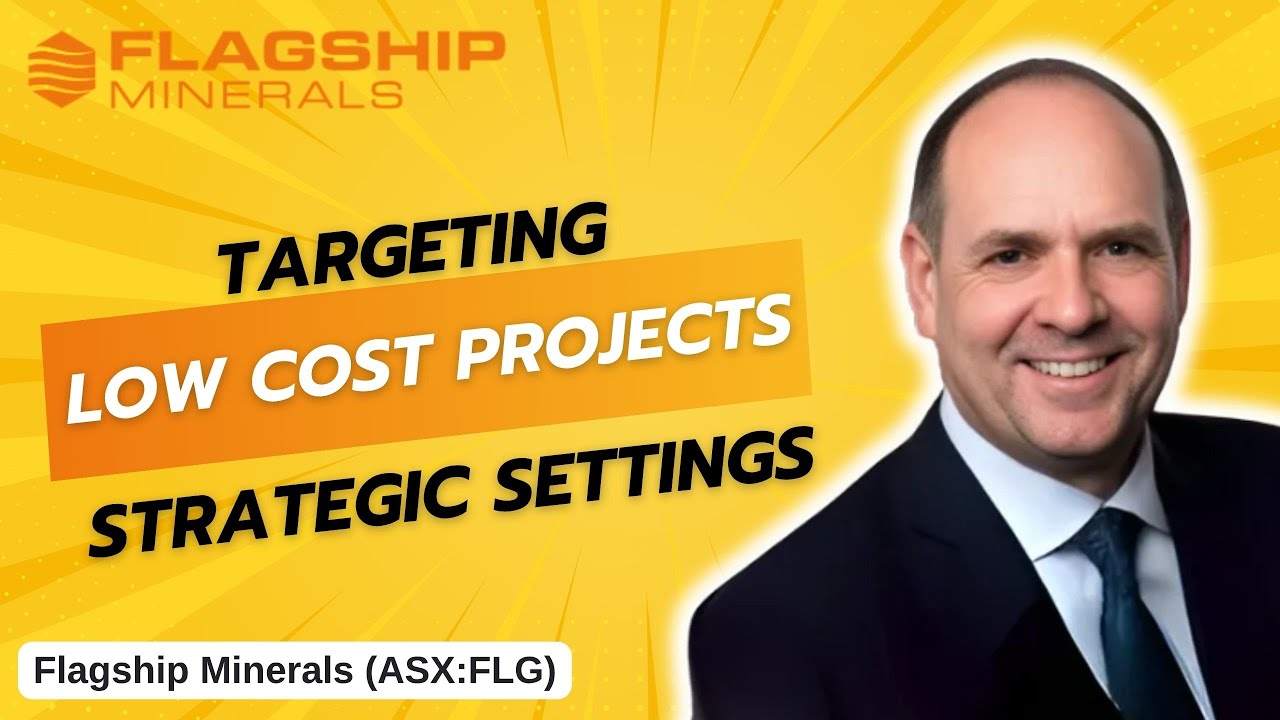Transcription of The Stock Network Interview with Flagship Minerals (ASX:FLG) Chairman and Managing Director, Paul Lock
Lel Smits: Flagship Minerals is focused on becoming a low-cost producer of gold and copper through large-scale oxide projects in Chile, a country rich in mining history and infrastructure. With projects located in areas close to major mines and surrounded by industry giants like Barrick, Newmont and Kinross, the company is developing its Pantanillo Gold and Rosario copper projects to tap into strong global demand. Ahead of appearing at Sydney Mining Club, I’m joined by Chairman and Managing Director, Paul Lock, to hear more. Paul, welcome to the Stock Network.
Paul Lock: Good to be here.
Lel Smits: Flagship Minerals Pantanillo Gold Project sits right in Chile’s Maracunga Gold Belt, home to more than 65 million ounces of gold. Can you outline what you think makes Pantanillo so exciting and how you’re planning to grow the 1 million ounce gold resource that you’ve already defined?
Paul Lock: For sure, Lel, we are really excited. So you mentioned 65 million ounces. That’s within 35 kilometre, a 35 kilometre radius of our Pantanillo project. But the Marrokoonga Gold Belt itself is home to more than 100 million ounces of gold in resource. So it is a really rich belt and there’s a lot of activity in it. So what excites us when we look at a project is one, you know, is the project in a good neighbourhood? And we have Barrick, Newmont, Kinross. We’ve got Anglo. We’ve got Goldfields, Rio2, Hochschild all around us. So it’s a really good belt from that perspective. And then what we then look at is are there projects happening? Have projects just been permitted? Are there projects in construction? And Rio2, a Canadian company with a market cap of 650 mil, they were just permitted.
They’re in construction and fully funded. And they’ll be producing about 92,000 ounces a year for 10 years to start with on an AISC of 1, 2, 3, 7. So it’s low cost, just permitted and in construction and fundable. And then that tells us, providing we’ve got the right project, that we can achieve the same. So Rio 2 is in the same geography, geology, and permitting regime. On our project, we have a million ounces of measured and indicated, 80% of that’s measured. It’s 0.69 grams a tonne, which might seem low, but actually it’s one of the higher grades in the belt, and this is a heat leachable belt. So that means that it’s all at surface and very cheap to process. On growth of the project, so it’s a million ounces now, but that pit shell,
Well, the pit shell constraint was cut on a cutoff grade of 0.3 grams a tonne and a gold price of 1,035. So our neighbours are as low as 0.15 grams a tonne. And if we use today’s economics, we’ll see that what’s in the current pit shell come into resource and potential immediately around the pit shell, which has been drilled. So we see a significant upgrade in contained ounces just in and around our pit shell when we convert to JORC later this year. And then we’ve got a huge, a long strike growth option and then a deeper sulphides option. So we see this being a very substantial gold project.
Lel Smits: Excellent. Now your Rosario project is a high-grade copper and silver project near the El Salvador mine. Can you outline why oxide copper is valuable right now and also what this means for the future of flagship plants?
Paul Lock: For sure, Lel, so once again, Rosario is oxide. So we’ve been focusing on oxides because oxides have low capex and low operating costs. And to process metals, gold and copper from oxides is very simple. So what we’re looking for is bulk scalable projects, which are simple to run and which have low costs. So that’s oxides. And that’s why we’re looking at Rosario. Rosario sits in about 10 kilometres north of El Salvador. El Salvador is actually a combination of projects, but it’s mainly a large porphyry owned by Codelco. Codelco is investing $1.4 billion in expanding that mine. So that sends a good signal that we’re in the right neighbourhood. Escondida is to the north of us, about 150 kilometres. And there are other oxide projects, for instance, the Mantis Blancos project near El Salvador.
Antofagasta, which is a huge oxide project that’s been running for many, many years. So we are pre-drilled. We’ll be doing some trenching at Rosario and the idea is to set the project up for drilling and we’re hoping to replicate some of the larger copper oxide projects in Chile.
Lel Smits: Well, Paul, thank you so much for the update from Flagship Minerals, and I look forward to hearing more at Sydney Mining Club.
Paul Lock: Thanks, Lel. I look forward to seeing you there.
Ends
